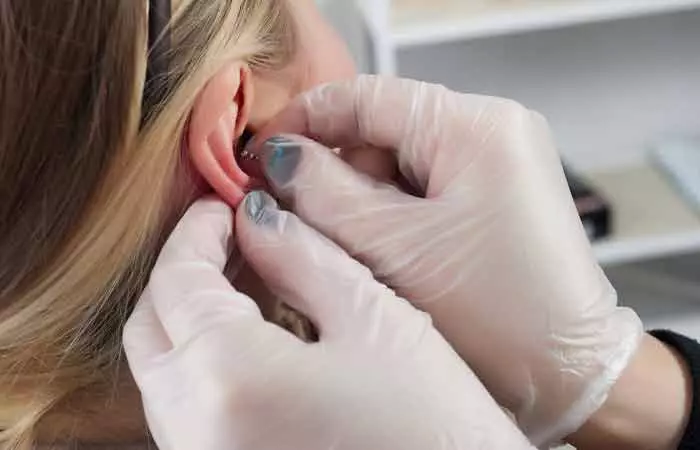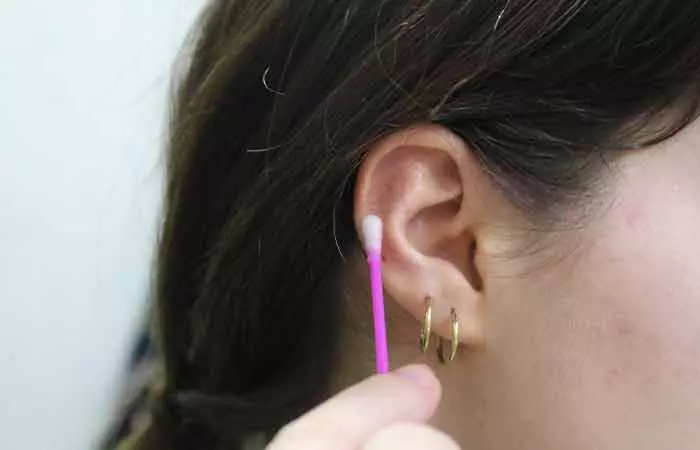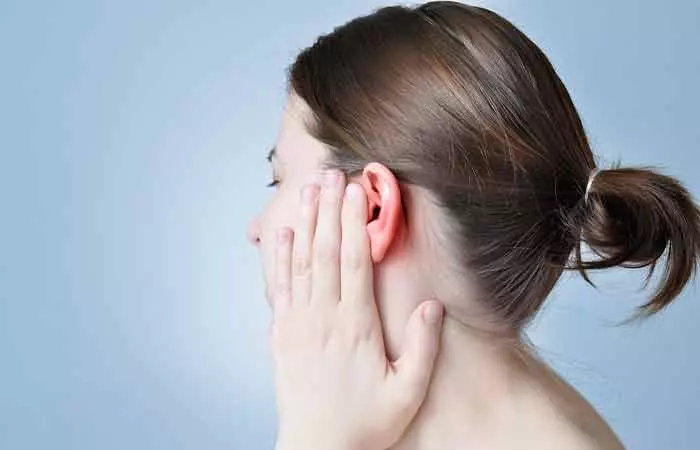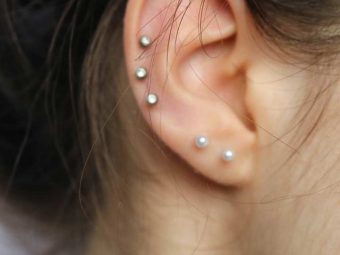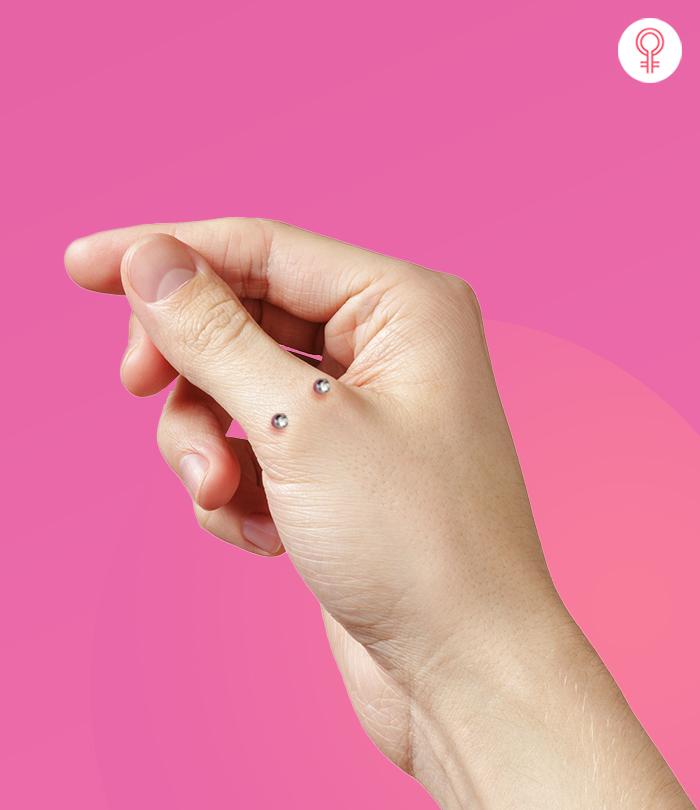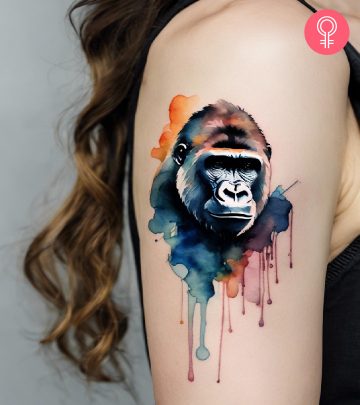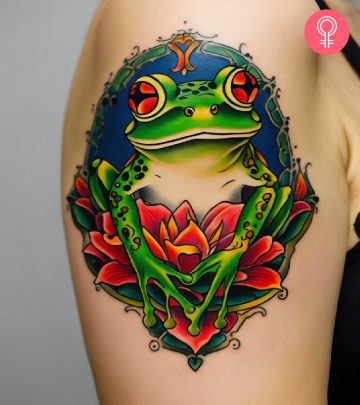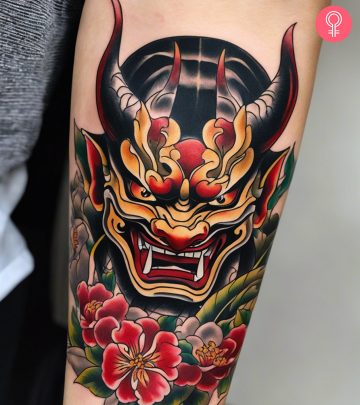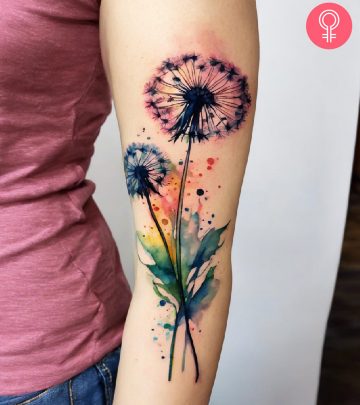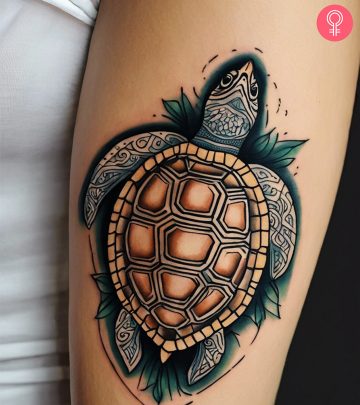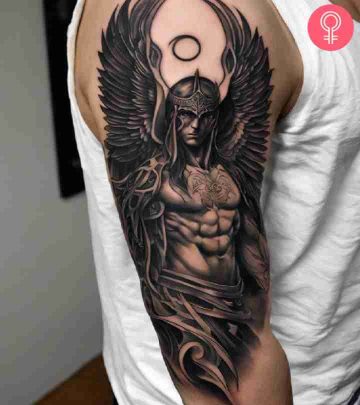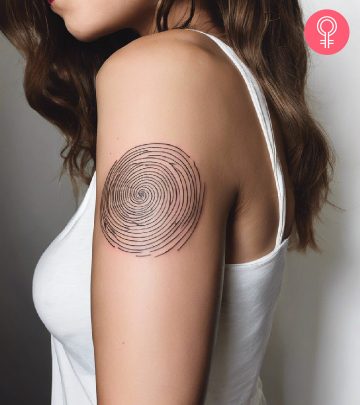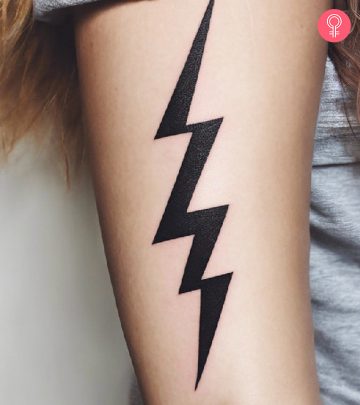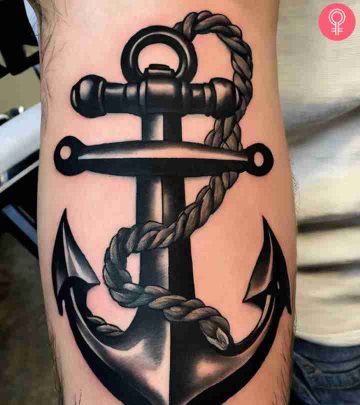What Is A Snug Piercing? Pain Levels, Healing, And Jewelry
Discover the process and risks involved in getting this edgy yet stylish ear piercing.
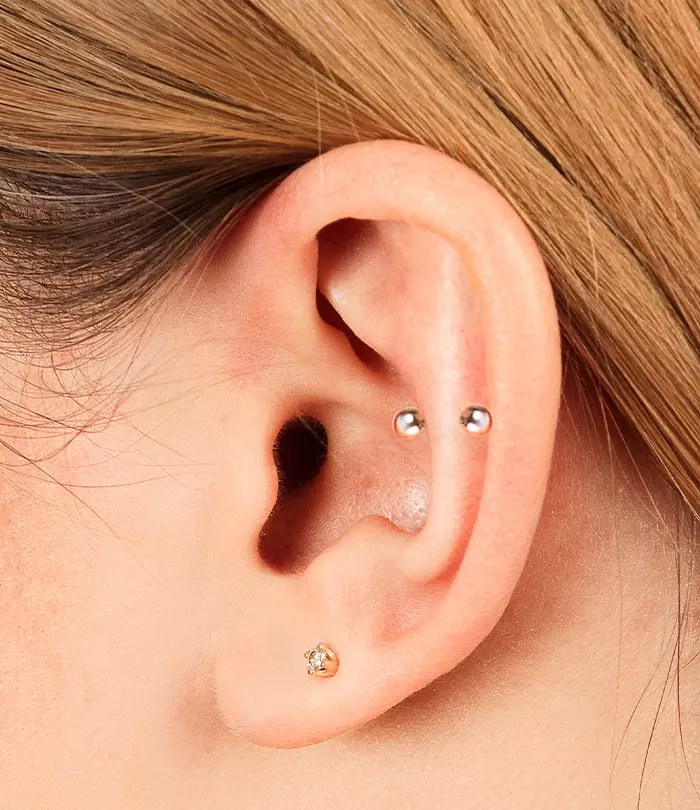
Image: StyleCraze Content Team
If you are looking for a unique form of self-expression and an excuse to indulge in some trendy jewelry, there is nothing quite like the thrill of getting a snug piercing.
A snug piercing involves piercing the curved ridge between the ear’s rim and inner cartilage. Unlike tragus or lobe piercings, both entry and exit points are visible at the front, creating an edgy chic look. While it is definitely a step above your upper lobe or industrial piercing, it is not everyone’s ear cup of tea. When opting for this piercing, it is important to find a reputable piercer who has experience and evidence of previously performing this piercing as determining the correct anatomy for it can be tricky.
Recognized as one of the more uncomfortable ear cartilage piercings, embarking on this journey requires just a touch of courage and pain tolerance. So, if you want to know all the relevant details about it, you have come to the right place. In this article, we will learn more about the procedure, the risks involved, and the cost of getting this piercing done. So, scroll down to know everything about snug ear piercings before you finalize your decision.
 Piercing Guide: Snug Piercing
Piercing Guide: Snug Piercing- Placement: The curved ridge between the ear’s rim and inner cartilage
- Best Jewelry: Curved or straight barbells and small hoop rings
- Cost: Roughly $90 or more
- Pain Level: Medium to high
- Healing Time: 12 months or longer
In This Article
How Painful Is A Snug Piercing?
While pain levels differ from person to person, snug piercings are considered one of the more painful piercing experiences. The piece of cartilage inside the anti-helix is thicker and tougher, making the area more sensitive to pain as compared to a helix piercing. Some people say that the discomfort may come from the initial puncture or when the piercer inserts the piece of jewelry. So, whether you are a beginner or an experienced piercing enthusiast, you should brace yourself for some significant discomfort.
Candice Miller, a blogger, shared her experience of getting a snug piercing in her personal blog. She writes, “It was quite possibly the most excruciating extended pain I’ve gone through, I can’t sleep on the left side of my head, and cleaning it only makes it hurt worse. Trying to dull with lots of advil. But it’s beautiful, and I would do it all over again, no regrets, the pain is worth it, and I love it (i)”
That is why getting an experienced piercer is crucial to having a swift, less painful, and smooth piercing experience. Plus, following simple tips such as taking deep breaths will help you ease into the experience more smoothly.
Snug piercings are painful and require a significant level of pain tolerance among other things. What does the process entail? Find out about it in the next section.
Snug Piercing: The Procedure To Follow
A snug piercing process is simple and involves the following steps:
- Select a reputable piercer experienced in snug piercings with photo evidence of past clients with properly healed snug piercings.
- The piercer will assess your ear anatomy and determine if your ear is suitable for a snug piercing.
- Once the piercer thinks you are ready for the piercing, they clean the ear.
- Then, they mark the entry and exit points with a single-use sterile marker and let you approve the placement.
- The piercer uses a sterilized needle to create a hole and insert the chosen jewelry piece like curved or straight barbells with precision.
- A receiving tube may be used to minimize tissue trauma.
- Then the piercer provides proper aftercare instructions to reduce the risk of infection and other complications.
While following proper sanitation and hygiene protocols is vital to a successful piercing procedure, understanding the healing process and adhering to aftercare guidelines is equally important for a speedy and safe recovery. Check out the next section to know more.
Healing Time And Aftercare Tips
The healing time may typically take between 12 months or longer. However, it is important to note that this depends on the individual’s anatomy and immune system, and how their body responds to the jewelry.
Following your piercer’s aftercare instructions to the tee is crucial to a safe and smooth healing process. Here are some simple aftercare tips you can follow (1):
- Use a sterile saline solution with 0.09% sodium chloride to clean the piercing twice a day. Make sure you only use a medical-grade solution from a pharmacy and not homemade ones as the salt ratio may be incorrect leading to excessive dryness and irritation at the piercing site.
- Use a clean cotton pad or gauze to clean the area around the piercing carefully, removing any crust or debris.
- Make sure you clean your hands before touching the piercing.
- Refrain from rotating or moving the jewelry unnecessarily to avoid any unnecessary friction.
- Avoid sleeping on the side of the snug ear piercing, especially during the initial healing phase to prevent irritation.
- Keep hair products like hairspray and shampoo away from the piercing to prevent irritation.
- Avoid swimming or using hot tubs during the initial healing period to avoid contamination and the risk of infection.
- Avoid changing the jewelry until the piercing is fully healed.
- Keep an eye out for signs of infection such as increased redness, swelling, pain, or a foul-smelling discharge with an unusual color.
- Attend any follow-up appointments scheduled by your piercer to ensure healthy healing progress as well as prompt downsizing of jewelry.
 Pro Tip
Pro TipRemember, every person’s body heals differently. So be patient and consistent with your aftercare routine. If you have any concerns or questions, don’t hesitate to reach out to your piercer or a healthcare professional.
The versatile nature of snug piercings allows one to experiment with different styles of jewelry to create bold and dramatic looks. Find out more about them in the section below.
Types Of Jewelry Used For A Snug Piercing
Snug ear piercings offer various jewelry styles to suit personal preferences and aesthetics. Here are some jewelry you can experiment with:
- Barbells: Straight or curved bars with decorative ends, offering versatility in style.
- Small Rings: Continuous or segmented hoops that encircle the snug area, creating an edgy chic look.
- Curved Barbell With Gemstones: A curved bar adorned with sparkling gemstones for added elegance.
Keep your personal style, comfort, and the healing process in mind when selecting your jewelry. Always opt for high-quality materials like implant-grade steel or titanium to minimize the risk of irritation or allergic reactions (2).
Working with an inexperienced piercer in unsanitary conditions or improper aftercare instructions properly may increase the risk of developing an infection and other complications. Scroll down to find out what they are.
Side Effects Of A Snug Piercing
It is normal to experience some redness and swelling during the initial healing stages. However, here are some specific side effects you should look out for after getting a snug ear piercing:
- Snug Piercing Infection
Infections can occur with any piercing, including snug piercings. It’s essential to be aware of the signs and take prompt action if you suspect an infection. Common symptoms of a snug piercing infection include (3):
- Increased redness
- Excessive swelling that doesn’t subside after the initial healing period.
- Persistent or worsening pain around the piercing site.
- Unusual warmth in the pierced area.
- Yellow or green discharge with an unusual smell.
- Fever
- Snug Piercing Rejection
Snug piercing rejection occurs when the body perceives a new piercing as a threat and pushes the jewelry out of the skin. Factors such as improper placement or poor jewelry quality may trigger this reaction. Your piercer may remove the jewelry and allow the piercing to close to avoid complications.
- Keloid In Snug Piercing
A keloid is a thick, raised scar tissue that may develop from getting this ear piercing (4), (5). Individuals with a tendency to develop keloids may be more prone to this complication. Consult your healthcare professional or dermatologist for appropriate treatment.
 Quick Tip
Quick TipUnderstanding the procedure and risks involved is crucial to making your decision. But how much do these snug ear piercings cost? Find out in the next section.
How Much Do Snug Piercings Cost?
The snug piercing fee may vary, depending on factors like the studio’s geographic location and reputation, the piercer’s experience, and the type of jewelry used. A snug piercing may roughly cost about $90 or more. High-end studios in metropolitan areas or those with renowned piercers may charge more, potentially reaching up to $100 or more. Consult several piercers and get a good idea about the total cost, additional fees, and available jewelry options before going for it.
Snug ear piercings are perfect for those who want to make a bold statement. The piercing’s location makes it more sensitive to pain than your good old lobe or helix piercing. So, do it only if you have the courage and a good pain tolerance. Apart from the above-mentioned factors, getting it done with an experienced piercer is important to a smooth recovery process. But remember, not following the aftercare instructions thoroughly can increase the risk of developing an infection or keloids. Therefore, do your research, consult your piercer or healthcare professional, and be absolutely sure before getting this piercing.
Frequently Asked Questions
How did snug piercing get its name?
It is believed that the piercing was named after the clothing line Snug Industries in the 1990s by Caitlin Theobald.
Is a snug the same as a conch?
No, a snug and a conch piercing are not the same. The snug piercing is done along the anti-helix, while the conch piercing is done within the large, cup-shaped area known as the concha.
Is snug piercing rare?
Yes, the snug piercing is relatively rare compared to standard lobe or cartilage piercings due to its unique placement and the potential for increased pain during the procedure. The fact that individual anatomy may vary, makes the placement for snug piercing tricky to determine, contributing to its rare status. However, it offers a distinctive and stylish look, making it popular among those seeking a bold and edgy piercing option.
Key Takeaways
- Snug piercings involve piercing the curved ridge between the inner ear and the cartilage.
- It is considerably more painful than getting a lobe or helix piercing.
- Cleaning the piercing twice daily with a saline solution and avoiding twisting the jewelry are important to a speedy and safe recovery.
- Infection and keloids are some of the side effects of getting a snug piercing.
Snug piercings are a bold statement for those seeking something different. Check out this video to discover why they are creating a buzz in the realm of body art and the benefits and risks involved.
Personal Experience: Source
StyleCraze's articles are interwoven with authentic personal narratives that provide depth and resonance to our content. Below are the sources of the personal accounts referenced in this article.
(i) Ear piercing! :Dhttps://revelationsofacollegefreshman21.blogspot.com/2011/08/ear-piercing-d.html
References
Articles on StyleCraze are backed by verified information from peer-reviewed and academic research papers, reputed organizations, research institutions, and medical associations to ensure accuracy and relevance. Read our editorial policy to learn more.
- SUGGESTED AFTERCARE FOR BODY PIERCINGS
https://safepiercing.org/aftercare/ - JEWELRY FOR INITIAL PIERCINGS
https://safepiercing.org/jewelry-for-initial-piercings/ - CARING FOR NEW PIERCINGS
https://www.aad.org/public/everyday-care/skin-care-basics/tattoos/caring-for-pierced-ears - Clinical Analysis of Lobular Keloid after Ear Piercing
https://www.ncbi.nlm.nih.gov/pmc/articles/PMC5556724/ - Keloid: A case report and review of pathophysiology and differences between keloid and hypertrophic scars
https://www.ncbi.nlm.nih.gov/pmc/articles/PMC3687166/





